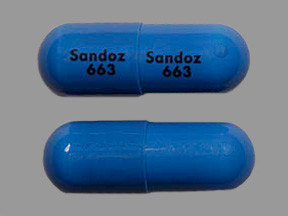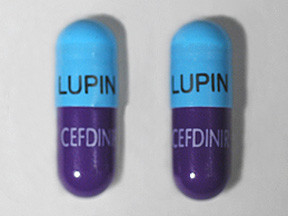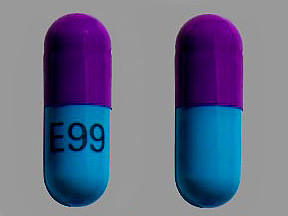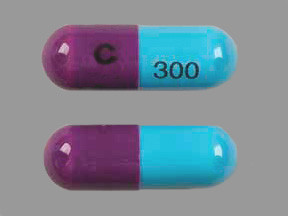CEFDINIR - ORAL
PHONETIC PRONUNCIATION: (SEFF-dih-neer)
COMMON BRAND NAME(S): Omnicef
GENERIC NAME(S): cefdinir
Uses
USES: Cefdinir is used to treat a wide variety of bacterial infections. This medication is known as a cephalosporin antibiotic. It works by stopping the growth of bacteria. This antibiotic treats only bacterial infections. It will not work for viral infections (such as common cold, flu). Using any antibiotic when it is not needed can cause it to not work for future infections.
How to use CEFDINIR - ORAL
HOW TO USE: Take this medication by mouth with or without food as directed by your doctor, usually once a day or twice a day (every 12 hours). The dosage is based on your medical condition and response to treatment. For the best effect, take this antibiotic at evenly spaced times. To help you remember, take this medication at the same time(s) every day. Continue to use this medication until the full prescribed amount is finished even if symptoms disappear after a few days. Stopping the medication too early may allow bacteria to continue to grow, which may result in a relapse of the infection. Some medications can bind with cefdinir preventing its full absorption. If you take antacids containing magnesium or aluminum, iron supplements, or vitamin/mineral products, take them at least 2 hours apart from cefdinir. Inform your doctor if your condition persists or worsens.
Side Effects
Precautions
Interactions
Overdose
Images

- color
- light green
- shape
- oblong
- imprint
- 93 3160, 93 3160

- color
- blue
- shape
- oblong
- imprint
- Sandoz 663, Sandoz 663

- color
- purple
- shape
- oblong
- imprint
- LUPIN LUPIN, CEFDINIR CEFDINIR

- color
- blue
- shape
- oblong
- imprint
- Sandoz 663, Sandoz 663
Reviews
Faq for CEFDINIR - ORAL
Cefdinir is an oral antibiotic medication used to treat various bacterial infections, including bronchitis, pneumonia, sinusitis, ear infections, skin infections, and certain types of strep throat.
Cefdinir works by interfering with the growth and multiplication of bacteria. It belongs to a group of antibiotics called cephalosporins, which target the bacterial cell wall, ultimately leading to the destruction of the bacteria.
Common side effects of cefdinir include diarrhea, nausea, vomiting, stomach pain, headache, dizziness, and tiredness. If any of these side effects persist or worsen, it is recommended to notify your healthcare provider.
Cefdinir is typically taken by mouth once or twice daily, with or without food, as directed by your healthcare provider. It is important to complete the full course of treatment prescribed to ensure the infection is fully cleared.
Cefdinir may interact with certain medications, such as antacids containing aluminum or magnesium, iron supplements, or products containing sucralfate. It is important to inform your doctor about all the medications and supplements you are taking to avoid any potential interactions.
Cefdinir should be used during pregnancy only if clearly needed, as the safety of this medication has not been well-established in pregnant women. It is also recommended to consult a doctor before using cefdinir while breastfeeding, as it may pass into breast milk and may harm the nursing infant.
Contact your doctor immediately if you experience any allergic reactions, severe diarrhea, or worsening of symptoms while taking cefdinir. It is essential to seek medical attention for any unexpected or concerning side effects.
Like all antibiotics, the overuse or misuse of cefdinir can lead to antibiotic resistance. It is crucial to take cefdinir exactly as prescribed and only when necessary to help prevent the development of antibiotic-resistant bacteria.
The improvement of symptoms with cefdinir can vary depending on the type and severity of the infection. Generally, some improvement can be noticed within a few days, but it is important to complete the entire course of treatment as prescribed by your doctor, even if symptoms resolve.
Disclaimer
IMPORTANT: HOW TO USE THIS INFORMATION: This is a summary and does NOT have all possible information about this product. This information does not assure that this product is safe, effective, or appropriate for you. This information is not individual medical advice and does not substitute for the advice of your health care professional. Always ask your health care professional for complete information about this product and your specific health needs.


No Reviews Yet